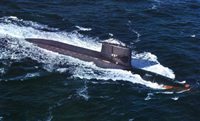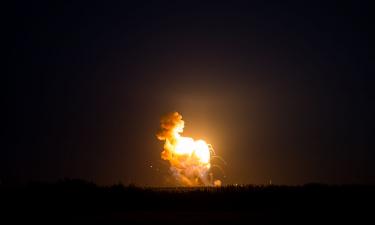Russia: anniversary of 1961 nuclear submarine K-19 accident
The K-19, the first Soviet submarine to carry ballistic missiles, was on its first training voyage in the neutral waters of the North Atlantic in July 1961 when its reactor cooling system sprang a leak, sending the core temperature skyrocketing and threatening a meltdown.

The craft's captain and 139-man crew stayed on board to repair the system, exposing themselves to severe radiation. Eight crew members died within weeks, 12 died over the next two years and 20 others suffered longer-term illnesses.
Some experts also say an explosion in the submarine's reactor could have caused ballistic missiles and torpedoes aboard the submarine to also explode, which could have been interpreted as a pre-emptive strike by the United States and could have triggered a third world war.
The incident was not publicized in the Soviet era because the operation was regarded as a failure and the crew members seen as not deserving recognition, Nikishin told The Associated Press. The first crew members to die were buried secretly in lead coffins in order to contain radiation from their bodies, Nikishin said.
The accident was the basis for the 2002 Hollywood movie "K19: The Widowmaker" starring Harrison Ford and Liam Neeson, acording to the AP.
The remembrance ceremony, held at the Kuzminskoye cemetery in southeastern Moscow where the crew members are buried, united most of the surviving veterans. Many of them, their chests bedecked with medals, had not seen each other for decades and they rushed to hug and greet each other. But as a piece of red cloth was lifted from the shiny new memorial made of black marble commemorating their late colleagues and friends, the veterans' eyes filled with tears.
Subscribe to Pravda.Ru Telegram channel, Facebook, RSS!





